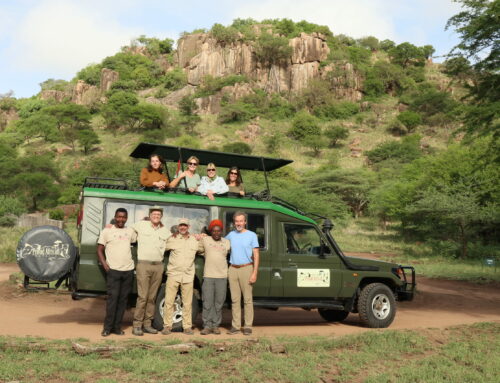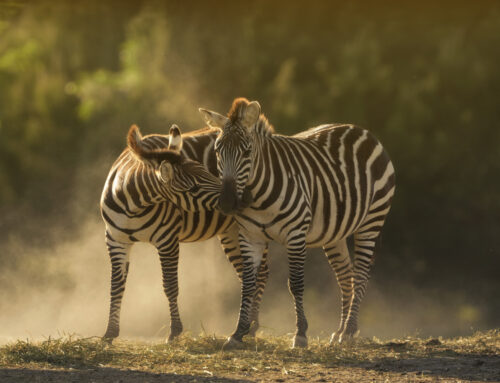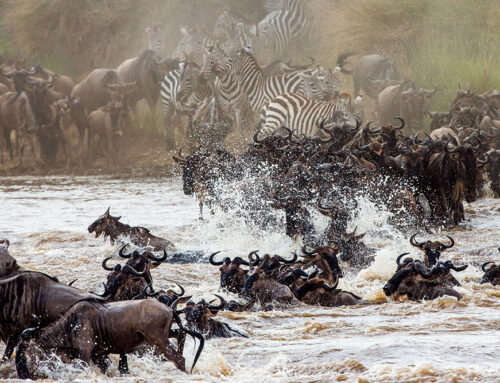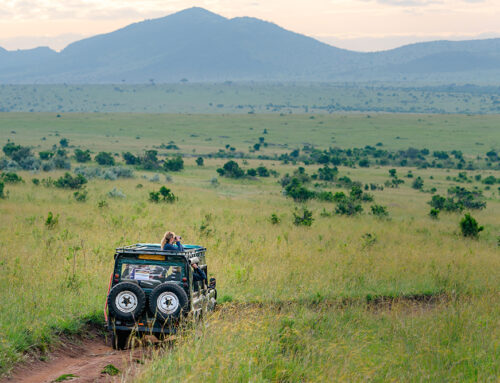The Serengeti in Tanzania promises some of the most exhilarating moments of The Great Migration in Africa. An annual pilgrimage led by massive herds of wildebeests, zebras, and gazelles looking for greener pastures, The Great Migration journey covers almost 2,000 miles. It unfolds in Serengeti National Park in East Africa and encompasses Tanzania and Kenya.
One of the most awe-inspiring natural phenomena on the planet, it carves deep memories into the minds of travelers, photographers, wildlife enthusiasts, and locals alike. The relentless pursuit of sustenance is marked by three key phases.
Calving season in the Southern Serengeti (January – March) reveals a convergence of more than 500,000 wildebeest females giving birth. Lush grasslands provide a rich source of nutrition for newborns. The jaw-dropping spectacle of thousands of baby calves taking their first steps is a heartwarming testament to the cycle of life.
River crossings are a necessary evil for survival as the dry season progresses (April – September). Herds embark on the daunting task of crossing the treacherous Grumeti and Mara rivers. Between hungry crocodiles wading silently to attack easy prey and fast-flowing waters challenging even the strongest of legs, river crossings are incredibly dangerous.
Return journeys come too quickly (October) for the animals. They’ve enjoyed grazing, growing, and playing throughout the Masai Mara, but must rally for the long trip south (back to the Serengeti). Exhaustion, predators, poaching, and unpredictable weather pose threats to the resilient creatures throughout the trek. The hunt for water, vegetation, and a new resting place keep them driving forward.
The Great Migration in Tanzania is one of the universe’s most intricate dances between wildlife and nature. Conservation efforts and knowledge experts help safeguard the passage, as well as sustain this critical aspect of Africa’s ecosystem.
Joining Proud African Safaris in that effort to witness its splendor is an unforgettable experience. A few preparation tips for travelers include:
- Book accommodations early for the top pick of where you stay and what you see.
- Pack wisely with lightweight/breathable clothing, layers, a wide-brimmed hat, sunscreen, insect repellent, sturdy shoes, binoculars, and a camera with multiple flash options.
- Research health precautions so you’re up to date on advisories/vaccinations, carry a basic first aid kit, and bring extra of necessary medications.
- Book with a reputable tour guide committed to ethical practices, safety, and honesty.
Email info@proudafricansafaris.com for more information on experiencing The Great Migration, or complete the form below for more!
The Serengeti in Tanzania promises some of the most exhilarating moments of The Great Migration in Africa. An annual pilgrimage led by massive herds of wildebeests, zebras, and gazelles looking for greener pastures, The Great Migration journey covers almost 2,000 miles. It unfolds in Serengeti National Park in East Africa and encompasses Tanzania and Kenya.
One of the most awe-inspiring natural phenomena on the planet, it carves deep memories into the minds of travelers, photographers, wildlife enthusiasts, and locals alike. The relentless pursuit of sustenance is marked by three key phases.
Calving season in the Southern Serengeti (January – March) reveals a convergence of more than 500,000 wildebeest females giving birth. Lush grasslands provide a rich source of nutrition for newborns. The jaw-dropping spectacle of thousands of baby calves taking their first steps is a heartwarming testament to the cycle of life.
River crossings are a necessary evil for survival as the dry season progresses (April – September). Herds embark on the daunting task of crossing the treacherous Grumeti and Mara rivers. Between hungry crocodiles wading silently to attack easy prey and fast-flowing waters challenging even the strongest of legs, river crossings are incredibly dangerous.
Return journeys come too quickly (October) for the animals. They’ve enjoyed grazing, growing, and playing throughout the Masai Mara, but must rally for the long trip south (back to the Serengeti). Exhaustion, predators, poaching, and unpredictable weather pose threats to the resilient creatures throughout the trek. The hunt for water, vegetation, and a new resting place keep them driving forward.
The Great Migration in Tanzania is one of the universe’s most intricate dances between wildlife and nature. Conservation efforts and knowledge experts help safeguard the passage, as well as sustain this critical aspect of Africa’s ecosystem.
Joining Proud African Safaris in that effort to witness its splendor is an unforgettable experience. A few preparation tips for travelers include:
- Book accommodations early for the top pick of where you stay and what you see.
- Pack wisely with lightweight/breathable clothing, layers, a wide-brimmed hat, sunscreen, insect repellent, sturdy shoes, binoculars, and a camera with multiple flash options.
- Research health precautions so you’re up to date on advisories/vaccinations, carry a basic first aid kit, and bring extra of necessary medications.
- Book with a reputable tour guide committed to ethical practices, safety, and honesty.
Email info@proudafricansafaris.com for more information on experiencing The Great Migration, or complete the form below for more!






